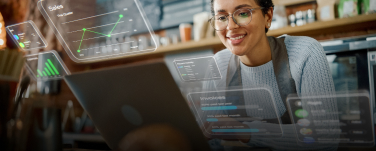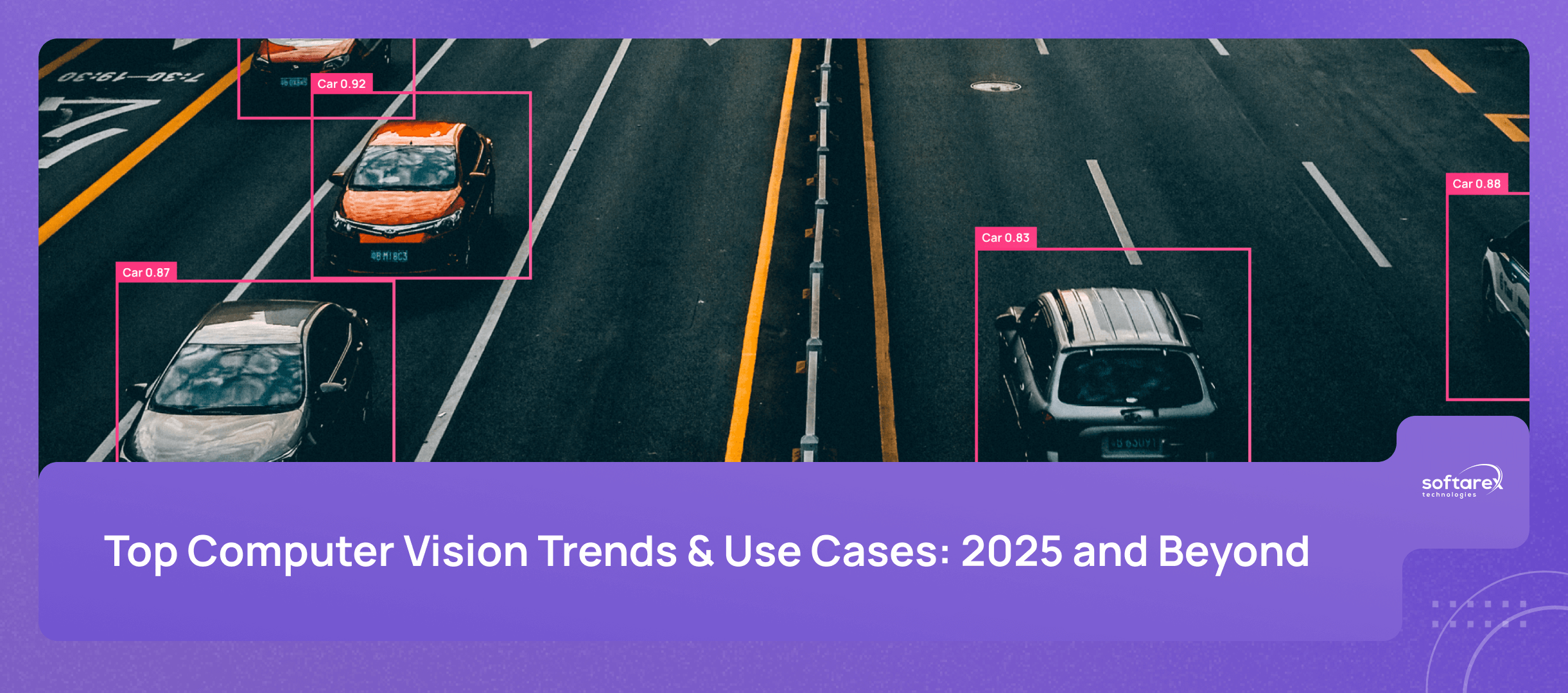Great customer service can make or break a restaurant’s success in today’s competitive market. But here’s the challenge: customers now expect instant service at any time of the day, while restaurants struggle with massive staff turnover – reaching 74% annually. This challenge has led to the increasing adoption of AI-powered chatbots as an innovative solution to customer service needs.
This shift is evident in the projected growth of the chatbot market, which is set to expand by $5.37 billion between 2024 and 2028, with an impressive growth rate of 35.27%. This shift is in line with wider industry predictions, with Gartner predicting that by 2025, 8 out of 10 customer service departments will be using some form of generative AI to improve both their service and efficiency. The impact is particularly relevant to customer engagement and retention strategies, with 38% of executives citing improved customer experience as the primary goal of their large-scale language model deployments.
For restaurants, AI chatbots are proving to be more than just a fancy tech addition. They’re becoming essential tools that help businesses stay in touch with customers across multiple platforms. As customer needs continue to change, these AI assistants are helping restaurants stay flexible and responsive.
What is a Restaurant Chatbot?
A restaurant chatbot is a software application designed to enhance real-time customer interactions by simplifying service and engagement across multiple platforms, including mobile apps, popular messaging apps (such as WhatsApp and Facebook Messenger), social media, and website chat windows.
The sophistication of restaurant chatbots varies widely. Rule-based chatbots work from a set of predefined scripts and are great for simple tasks – answering FAQs, confirming reservations, sharing menu details, or notifying customers of events. In contrast, AI-powered chatbots (also known as conversational AI) introduce a transformative approach to machine-human communication, with the key differentiator being conversational depth. Unlike basic chatbots that simply match keywords to predefined responses, conversational AI maintains context and remembers details from previous exchanges, creating a more human and engaging communication experience.
Two key technologies underpin this interaction:
- Natural language processing (NLP) enables the system to understand and interpret human language, breaking down complex queries into structured, meaningful data. This allows the AI to understand nuanced communication beyond literal word matching.
- Machine learning enables the chatbot to continuously learn and improve, dynamically adapting its responses based on each customer interaction. Through iterative learning, the AI refines its communication strategies, becoming increasingly sophisticated and contextually aware over time.
Current Applications in Restaurant Operations
Order management
For dine-in experiences, especially after the post-pandemic shift to QR code menus, waiter bots allow customers to place orders directly without waiting for staff assistance. In takeaway and delivery scenarios, these AI assistants engage with customers across multiple platforms, including WhatsApp, restaurant websites and social media channels. The bots process orders, communicate special requests to the kitchen and provide accurate pick-up times based on kitchen capacity.
Menu navigation and recommendations
Restaurant chatbots act as digital menu guides, giving customers instant access to dishes and prices. This eliminates the need for phone calls or web searches, and breaks down language barriers. These systems are particularly valuable for regular diners, keeping them informed of menu changes and new offerings, while remembering their preferences for future visits.
With advanced recommendation capabilities, chatbots in the restaurant industry are improving customer engagement by suggesting dishes and drinks tailored to each visitor’s tastes and preferences. Rule-based suggestions are based on menu labeling, where chefs pre-select dishes and drinks that go well together. For example, a chatbot might suggest a light side dish to complement a spicy main course. More advanced NLP-based recommendations analyze customer preferences and past interactions to make personalized suggestions in real time. This helps customers explore new options or decide between choices.
Table reservations and cancellations
Chatbots simplify table reservations by asking customers for their preferred booking time and checking availability in real time. They work through automated features on the restaurant’s website or social media, allowing customers to make reservations at any time. The benefits extend beyond booking, as chatbots also handle reservation confirmations, send timely reminders and provide easy cancellation links. They capture important details such as a number of guests, reservation times and special requests, ensuring a seamless and personalized dining experience for each guest.
Comprehensive customer care
Conversational AI solutions provide restaurants with a robust customer support system, handling complex queries and guiding customers through advanced natural language processing (NLP) and interactive decision trees. These chatbots further enhance customer engagement with timely notifications about order delivery times, reservations, discounts, new menu items and upcoming events – keeping customers informed and increasing marketing reach. Integrated cashless payment options streamline ordering, while feedback collection provides valuable insights into customer preferences and service improvements. This data helps restaurants tailor future offers and deliver a more personalized dining experience.
Impact on Customer Experience
Personalization
Restaurants use customer data and natural language processing to build detailed profiles, allowing chatbots to deliver tailored recommendations, offers and content. The result is dynamic, hyper-personalized engagement. Chatbots can recommend menu items based on a customer’s preferences, suggest personalized upgrades or add-ons, and even make dynamic changes to content and offers on the go. For example, Starbucks’ Deep Brew AI platform with chatbot capabilities learns customer preferences to make tailored recommendations, improving both interactions and operational efficiency.
Convenience and accessibility
AI-powered chatbots streamline the customer experience with instant support and efficient problem resolution. Their 24/7 availability and multilingual capabilities expand accessibility, ensuring customers can get help anytime, anywhere. Ultimately, the combination of speed, always-on access and personalization empowers customers and improves the overall service experience.
Operational Benefits for Restaurants
Building on these customer experience benefits, restaurants also gain operational efficiencies from using AI chatbots. These solutions increase cost efficiency by automating routine tasks and providing 24/7 support, allowing businesses to handle higher volumes of inquiries without increasing headcount. By taking over repetitive tasks, chatbots enable staff to focus on high-value interactions that require human judgment and emotional intelligence. The technology also provides valuable business intelligence by systematically collecting and analyzing customer interaction data, helping restaurants make informed decisions about operations, menu optimization and marketing strategies. In addition, the implementation of cutting-edge conversational AI enhances brand perception and positions restaurants as innovative and customer-centric businesses.
Real-world Case Studies
As restaurants adapt to changing customer expectations, restaurant management platforms have emerged as valuable tools that seamlessly integrate AI-powered solutions into daily operations. These comprehensive systems go beyond simple booking management to offer sophisticated guest engagement and marketing tools, with conversational AI at their core. Through intelligent automation, AI chatbots efficiently handle everything from availability checks and FAQ answers to menu recommendations while gathering valuable customer insights through feedback collection and waiting list management. This wealth of data enables restaurants to fine-tune their operations, implement strategic solutions such as deposit features to combat no-shows and unlock new revenue streams while enhancing the guest experience.
In the QSR sector, the evolution of AI-powered customer service began with basic chatbots on social media and company websites, with Taco Bell, Pizza Hut and KFC among the early adopters to launch customer service chatbots. While these early deployments helped reduce staff workload and streamline order processing, they lacked the natural conversational capabilities that customers expect from human interactions.
The landscape changed significantly after 2020, as advances in AI tech enabled more sophisticated conversational capabilities. The most significant advances have been in voice AI, particularly in drive-thru operations, where AI assistants can process orders in multiple languages, understand different accents and dialects, and operate effectively in noisy environments. As speech recognition technology continues to advance, it’s becoming an essential tool for restaurants looking to improve the customer experience while optimizing operations.
Strategic Approaches to Restaurant Chatbot Implementation
Successful implementation of AI-powered chatbots requires a strategic approach and expert guidance. Key best practices include delivering seamless omnichannel experiences across platforms, ensuring robust integration with internal systems, incorporating rich media elements to enhance engagement, and continuously optimizing performance through data-driven improvements.
The implementation process begins with a thorough understanding of specific business requirements, followed by careful platform selection and prototype development. Success depends on proper conversation design, extensive testing and ongoing refinement based on user feedback and performance metrics.
As restaurants navigate this technological transformation, partnering with an experienced development team is critical to success. Softarex brings extensive expertise in AI chatbot development, with a comprehensive approach from initial analysis to post-deployment optimization, ensuring solutions are perfectly tailored to each client’s unique needs. For restaurants ready to enhance their customer service capabilities with AI-powered solutions, our team is available to discuss your specific requirements and outline a tailored development strategy.









